Harriet Springbett's Blog
July 16, 2025
Empty Guts and Wind
Discovering the Boutonne river valley by bike:
I should have known our 80 km bike ride to a friend’s party near the Marais Poitevin last weekend wasn’t going to be simple when I saw how my husband had marked our route.
Note, in the left hand photo, that at least 3 lines lead nowhere – and one starts nowhere. Note how, in the top left corner of the right photo, he highlighted a route across countryside without any roads…
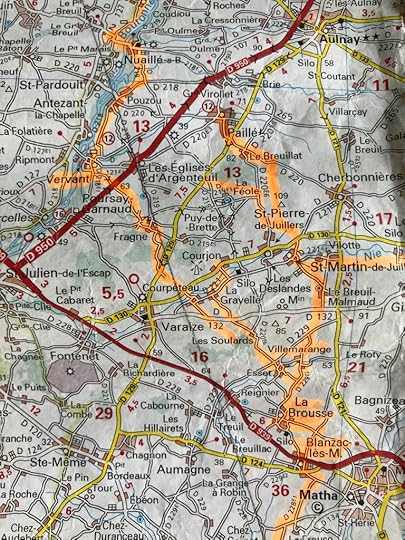
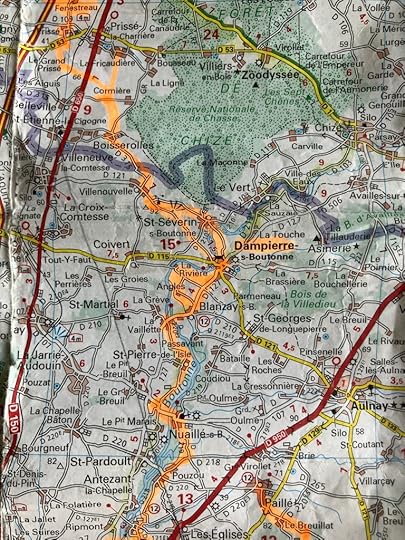
‘It’s OK, we’ve got our compasses,’ he reassured me. ‘There’ll be tracks. We just have to head north-west.’
The plan was to have an overnight stop at one of our favourite campsites – in Dampierre-sur-Boutonne – on Friday night, so that we’d arrive fresh and ready to party on Saturday afternoon. We knew there was a shop in the village, so we left behind our cooking stove, emergency food, waterproofs and other camping luxuries.
The forecast was for 35°C but as hardened cyclists (we’d done a 70 km ride in 37°C the previous week – carrying no kit in the shade along the flat river towpath and eating at least 3 ice-creams to keep us cool), we didn’t think the 60 km ride to Dampierre merited getting up early. As long as we found some food along the road or arrived before Dampierre’s village shop closed at 7pm, everything would be fine.
Which it was. At first. It’s easy to follow signs on a designated cycle route, but it’s more liberating to pick and choose a route that heads in a general direction. It was only 11:30am. We felt like true adventurers, pedalling through the gently rolling countryside of vineyards and woodland on tracks and winding lanes.
But then the countryside opened and the wind picked up. Not just any wind, but a strong north-westerly – i.e. a headwind. Suddenly, we had to push hard on our pedals to manage a meagre 10 km/h across huge, hedgeless expanses of maize, sunflowers and harvested cereal crops. The 20-45 km/h headwind seemed determined to push us back towards home. It was such hard work that I didn’t take any photos, so these were all taken on the return trip (which explains the sinister sky).
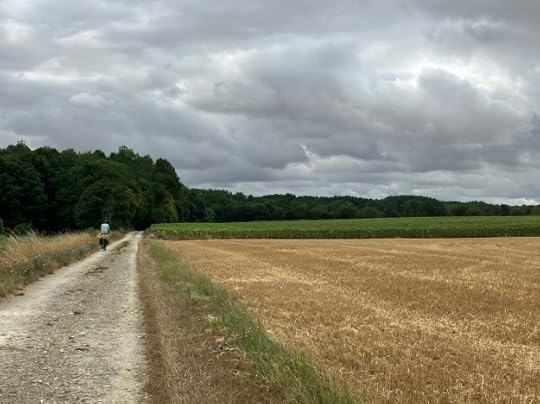
The roaring wind meant we could hardly hear each other speak, which didn’t help our disagreements on which compass was giving a correct reading: his or mine. Being intelligent (him), and remembering a similar problem in the past (him again), we (meaning ‘he’) realised that my compass reading was falsified by my nearby phone. When I moved it away, our compasses agreed – which probably saved our marriage.
We’ve never cycled against such a wind before. Not all day, in the heat. Luckily, there were some cemeteries along the way, and at Mons we watered the Brandy family with the dregs of our water bottles before filling up again.
There were plenty of excuses to stop and look at things that caught our attention, including a leaping deer, an unabashed coypu, a racing hare and a couple of magnificent châteaux: Mornay (top) and Vervant (bottom).
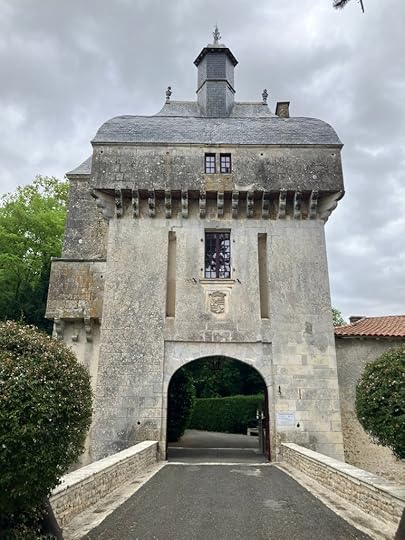
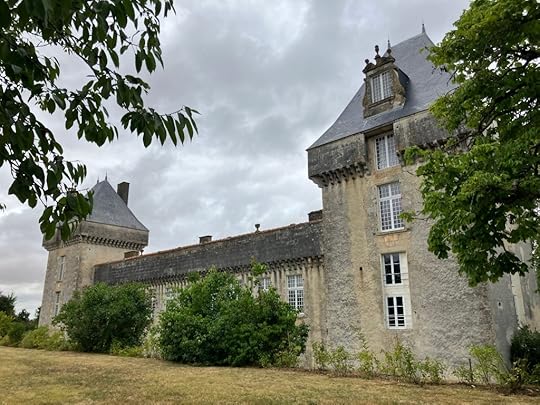
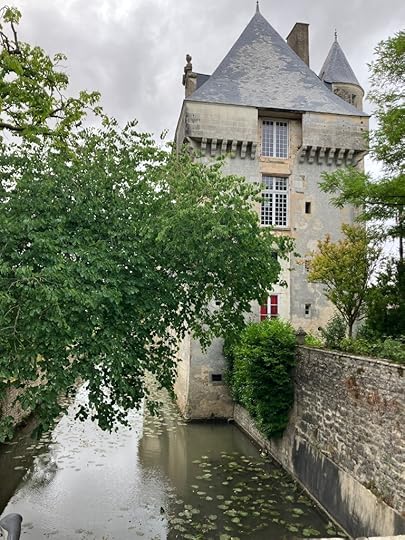
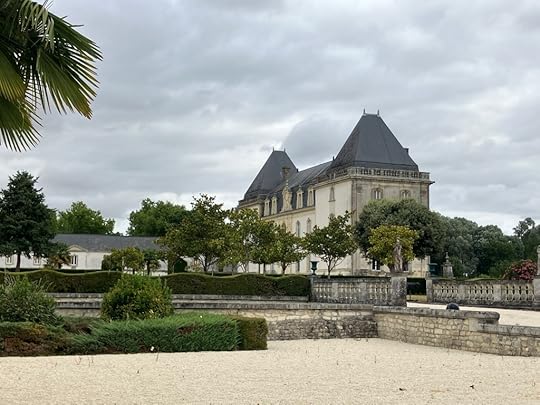
We were also particularly attentive to places where we could string up our hammocks and have a quick snooze of an hour or so to rest our aching legs.
The countryside was as parched as the American plains, and I was horrified to see one dry riverbed after another as we approached the Boutonne valley. The farmers, however, were happily watering roads and fields of stubble, creating puddles and mud which would have better served nature if the water had stayed in the rivers. Grrr…
At Vervant we picked up the Rives de Boutonne river valley cycling route signs and happily followed them through tiny, picturesque villages and vegetation that was a little greener. This section of the cycle route was so pretty that we wanted to explore further.
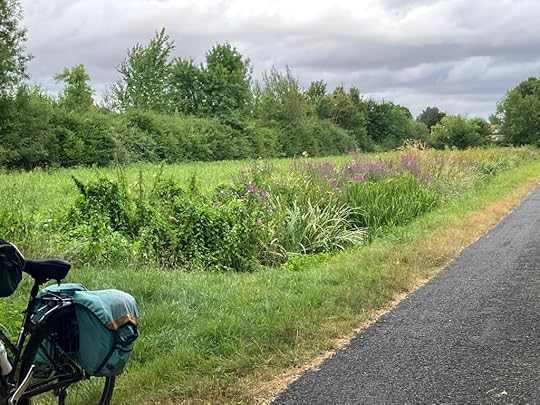
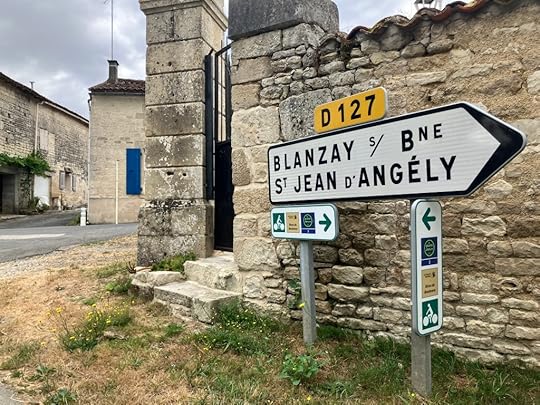
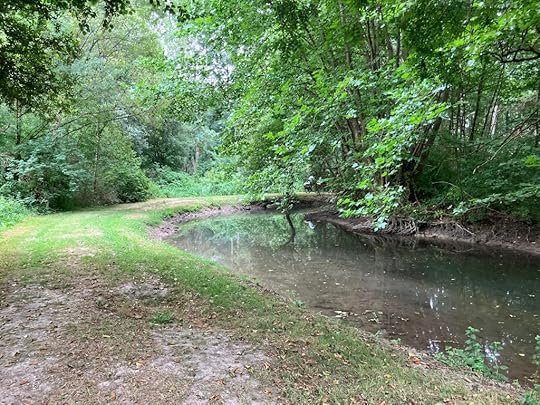
But we were still far from Dampierre and it would soon be 7pm. We hadn’t passed any shops. No cafés. Nowhere to buy an ice-cream.
We accelerated and eventually skidded to a stop in front of the village shop/bar at five to seven, only to find the square full of tables and chairs, a crowd of smiling faces, and a sign saying the shop was closed because tonight there would be a concert.
Luckily, a food truck arrived. The shop owner kindly offered to sell us some food but we declined, since he was busy selling beer and tickets to see the Quintana Dead Blues Experience. With our places paid for, hands stamped and the prospect of an evening of burger, chips and music, we were able to rest our aching limbs and set up our tent in the quiet campsite dominated by whispering poplar trees. Naturally, the wind had dropped to a light breeze.
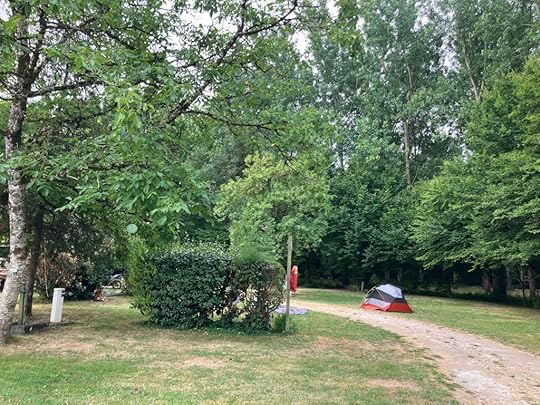
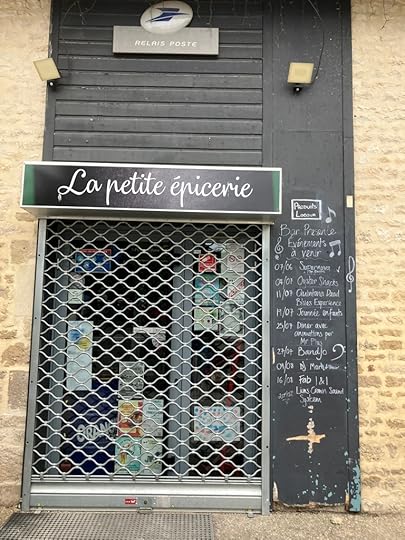
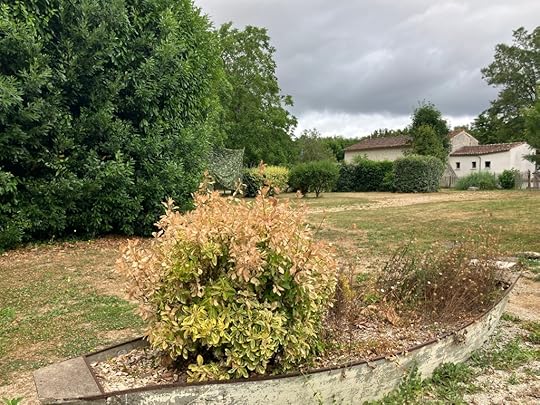
I felt as if we’d covered over a hundred kilometres. According to my counter, we’d done 58 km but the app on my telephone declared we’d cycled 64 km. It wasn’t only our compasses that were in disagreement. Given that I’m the one who configured my counter using a wheel diameter calculation, I think you can predict which system was more accurate.
The concert was amazing, as are the château (sorry, no photos) and the artists’ showcase. There was plenty of hot water in the shower and I fell asleep to the murmur of gossiping poplars. In fact, we had such a great time at Dampierre that we stopped there on Sunday evening, on the way home from the party.
The shop was closed.
Our friends had given us some leftovers for our evening meal but I’d counted on buying breakfast and a picnic at the campsite épicerie. Remembering the distinct lack of shops along the way, and bearing in mind the next day was a bank holiday, I took stock of our food situation and decided that dinner would be a melon. Breakfast would be our emergency cereal bars, fruit & nuts. Lunch would be a half-baguette. It would be enough. It wasn’t as if it was windy – at least, tomorrow’s wind should be behind us.
You’ve guessed it. The next day, not only was the lowering sky threatening rain, the wind had changed direction. Once again, we had to force our pedals to turn, though, to be honest, it wasn’t a full headwind so we managed to advance a little faster. And in our hunger, we chanced upon a hedgerow of wild fruit. Casting aside the nagging voice that suggested our guts might not appreciate too many plums, we feasted like birds.
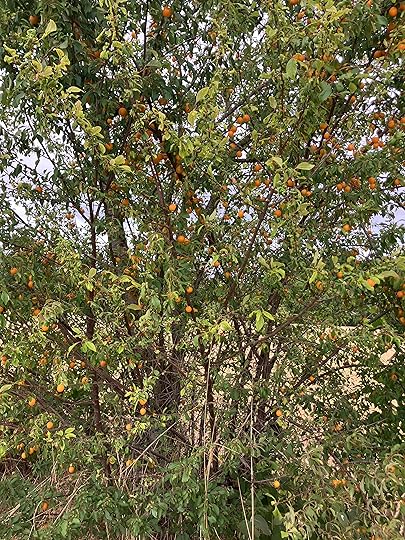
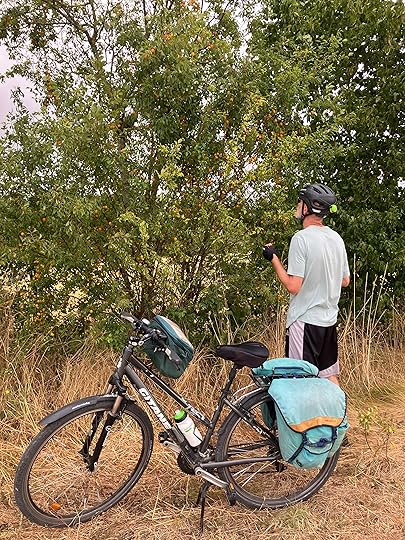
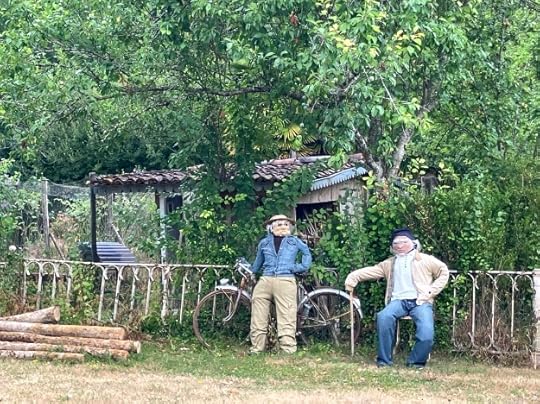
We wouldn’t have helped ourselves if these two guys had been watching the hedgerow.
But they were busy scaring crows a little further along the Rives de Boutonne circuit.
I’m sure it was the plums that gave us the energy to make it home that evening. Either that, or the pressing need to reach a toilet…
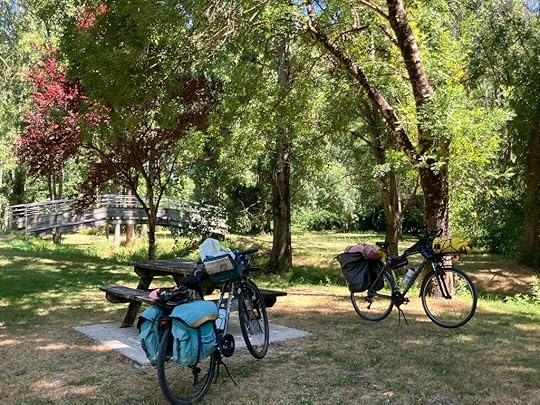
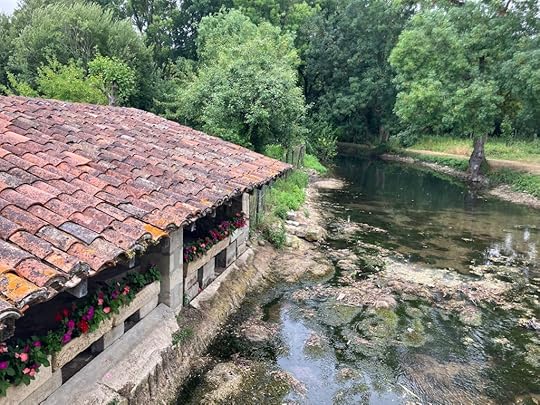
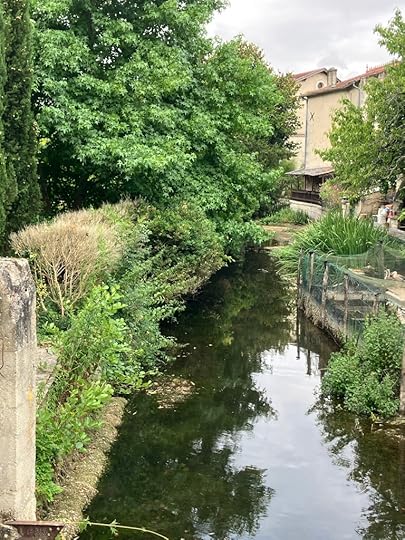
In any case, we may well return to the Boutonne valley. Next time, I’ll check the wind direction beforehand, not just the temperature. In fact, next time, I’ll choose my route such that any wind is behind me at all times.
June 3, 2025
LEC and The Pilot’s Wife
If you follow my terribly irregular blog posts, you’ll know that Cognac’s European literature festival (LEC) celebrates literature from a different country each year. Last year we were spoilt rotten with Ireland.
Which European country do you think 2025 will feature?
Here are some clues: mountains, cheese, chocolates, army knives, banking and watches… Have you guessed?
On the subject of Swiss watches, I recently read a brilliant historical novel that gave me a fascinating insight into Switzerland’s rôle during World War II: The Pilot’s Wife by Cynthia Anderson, published by Embla Books.
I’d like to share the secrets of this novel with you today. To begin with, here are the cover and description.

Three generations of women. One dark family secret. A truth that time never forgot .
1944, Europe. Nineteen-year-old Hedy can’t bear her country’s neutrality in the face of the ultimate evil. This is not the Switzerland she loves, and she cannot stand by any longer.
Undeterred by the risk of German patrols, she starts helping to smuggle lost Allied soldiers through the forest to safety across Lake Geneva. Finally, Hedy feels she is doing something worthwhile.
Then one night she stumbles across a wounded American airman. Second Lieutenant Samuel Reardon was dropping supplies to the French resistance when his plane crashed. Despite the grave danger it will bring to her family, Hedy can’t leave Samuel injured and alone, so she hides him in her father’s mountain hut.
As Hedy and Samuel grow closer, the dangers of their resistance work become ever more deadly, and soon the pair will be faced with the ultimate choice that will tear them apart . . .
2018, America. Nineteen-year-old Gina looks at her grandmother’s hands that tell the story of her whole life and wonders how much time they have left together. Since her mother died, Mamie Hedy is all Gina has left. But then her grandmother reveals a shocking secret that takes them back to her home in the Swiss mountains for the last time.
After all these years, can Gina and her grandmother find the key to unlock the secrets of their shared past?
***
If you think that sounds interesting, wait until you see what’s coming next!
I liked the book so much that I contacted Cynthia and she agreed to tell me more about her experience of life in Switzerland and how she came to write her book.
So without further ado, here is our interview.
***
Firstly, Cynthia, what inspired you to write The Pilot’s Wife?
Hi Harriet and thanks for inviting me on your blog.
I was inspired to write The Pilot’s Wife after visiting a watch museum in Le Brassus, a Swiss village on the border with France. It was the first time I’d seen the inside of a mechanical watch, and the beauty, precision and order of the parts struck me as a good metaphor for Switzerland. During World War II, the forest behind Le Brassus served as a route for smuggling information and people out of Europe, and many Swiss individuals risked their lives to do so. Curious about the people who opposed neutrality to help bring the war to an end, I wanted to write about them and this period in Swiss history.
I’m so glad you did. Can you tell us where the novel is set and suggest some places to visit?
It’s primarily set in Le Brassus, a village in the Vallée de Joux, Canton of Vaud. From the 16th century, Le Brassus was known for its ironworks with natural ore deposits. In the late 18th century, metalwork transitioned to horology. During long winters—some of the coldest temperatures in the country are recorded in Le Brassus—dairy farmers, isolated by heavy snow, made watch parts in their houses. In the spring, they would bring these components to sell to watchmakers in Geneva. This laid the foundation for the Vallée de Joux’s reputation as a center for precision watchmaking.
Since The Pilot’s Wife is a dual timeline, switching back and forth between the present and the 1940s, a scene occurs in the Audemars Piguet Museum in Le Brassus, where the company was founded in 1875. The Museum, in the shape of a stunning glass spiral reflecting the movements inside a watch, is a wonderful place to visit and learn about horology.
The Risoud Forest, just behind Le Brassus, is a popular destination for hiking, mountain biking, cross-country skiing, and snowshoeing. Stretching 15 kilometers, it’s the largest contiguous forest in Europe, half in Switzerland and half in France. The forest has massive spruce trees and is dotted with old woodcutters’ huts that serve as rustic shelters.
Other places to visit include Lausanne, the capital of the Canton of Vaud, and especially La Cité—the medieval part of Lausanne where the cathedral is located and overlooking the city and Lac Leman. A scene also takes place in Berne, the Old City (Altstadt), where more than 100 public fountains dating back to the 16th century are adorned with colorful statues representing historical and symbolic figures.
It sounds wonderful. How did you do the research?
I started with visits to Le Brassus, wandering around the town and through the Risoud Forest, trying to get a feel for the place and whether there was a story worth telling. I didn’t discover the connection with World War II until I came across an engraved plaque on the wall of the Protestant Church: 1939-1945, Despite Our Infidelities, God with His Almighty Hand, Protected our Country, To Him Alone the Glory. What infidelities, I wondered, and was there something specific that occurred in Le Brassus during the war?
I did research at the U.S. National Archives, and that’s where I learned, from declassified escape and evasion reports, the most surprising thing about Switzerland during the war—as a part of their policy of armed neutrality, they interned Allied pilots. I read Cathryn J. Prince’s Shot from the Sky: American POWs in Switzerland, a rigorously researched account of the American aircraft, sometimes shot down over the country or damaged planes returning from bombing campaigns in Germany seeking a safe landing whose airmen were then held in Swiss internment camps unable to leave until the war ended.
Fascinating! How long have you been in Switzerland?
I moved here in 2007. I’d been living in London with my French husband and two young sons for nine years, and we wanted a more immersive French-speaking environment for our family, so we jumped at a job opportunity my husband received in Switzerland. I live in the Canton of Vaud, just outside of Geneva.
What do you like most about Swiss life?
Switzerland is a fascinating and beautiful country to live in. Public transportation is well organized, and almost every mountain village is connected by train. I also appreciate the political system that decentralizes and shares power with regions. The right to a referendum exists as an essential check on government power, giving people a voice in all sorts of laws, from transport to health. Curiously, from 1939 to 1949, the Swiss parliament granted the government full powers under emergency law allowing the executive to rule without parliamentary consent and suspending the right for citizens to challenge laws via referendum. I often wonder if neutrality and the policies it engendered would have been more widely debated and questioned under the pressure of a referendum. This makes the bravery of Swiss individuals working in resistance even more remarkable.
Yes, their courage really comes through in The Pilot’s Wife. What are you working on now?
I’m writing another World War II story set in France and Germany, about women from many European countries sent to work in Germany.
I’ll look forward to reading that too. Good luck with your research and thank you for answering my questions.
Thank you for having me.
***
I hope you enjoyed Cynthia’s comments and can support her – and learn more about Switzerland – by buying her book here.
I’ll be back soon to reveal this year’s poster and tell you about the authors who’ll be present at the LEC festival and the books that have been chosen for the Readers’ Prize (Prix des Lecteurs).
Happy reading.

Cynthia Anderson was born in California and has degrees from the University of Colorado and the London School of Economics.
The Pilot’s Wife won a Bronze Medal in the 2024 Historical Novel Society First Chapters Competition. She is based in Switzerland with her husband and their labrador.
October 1, 2024
Everything Irish
2024 European Literature and Culture (LEC) Festival in Cognac:
Whatever you do, don’t book anything other than a visit to Cognac for the weekend of 15 – 17 November.
Why not?
Because (pretty much) the whole of Ireland will be coming for the LEC festival that weekend, which makes it the perfect opportunity to indulge in lots of Irish culture without having to travel there.
Yes, the LEC is a literature festival, because books are at the heart of it. But this 37th edition of Littératures Européennes Cognac (LEC), which attracted 6 000 participants last year, will offer so many different activities that it’s far more than a literary festival.
If you’re interested in Ireland, want to understand its history, geopolitics, art – or, like me, how to make a presentable Irish coffee* – then this festival is for you.
Of the 30 authors present, 10 are Irish and will be talking and answering questions about their work. During the festival and beforehand there will be showings of 7 Irish films (including Kneecap, about an Irish rap group – in Gaelic – on 24 October, 8:30pm at the Galaxy cinema), an Irish folk concert with Imrama, an Irish band Clover Milk at Le Garage bar, a workshop on making Irish coffees at Bar Louise from 4 – 10 November, a calligraphy workshop, an Irish folk dance lesson, a felt-weaving workshop, a participative Lego construction (and deconstruction), Irish legend storytelling, talks about Irish rugby, geopolitical round tables, history presentations, exhibitions and bookstalls. The majority of events are free, though some will require a small fee.

There are 3 different festival venues in the town during the weekend. The popular Kids Zone – children’s literature and a whole host of workshops, shows and book dedications – will be centred at the Fondation Martell. See the teaser film here.
You’ll find the world of comics and graphic novels at the Couvent des Récollets alongside an exhibition by illustrator Paddy Donnelly, the creator of the festival poster.
The centre of the festival, with its historians, authors, journalists and Ireland specialists, is at La Salamandre congress centre.
There are also many events at the festival partners’ premises, including an exhibition about Richard Hennessy, the cognac company’s Irish founder; an author talk with Irish writer Jan Carson at Meukow; a tasting of typical Irish dishes at the covered market; and showings of Irish films at local libraries. The LEC has also been organising Irish events throughout 2024, including Lisa McInerney’s visit to Jarnac in July.
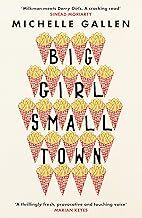

From mid-October until the festival, there will be an Irish writer in residence: Michelle Gallen, author of the brilliant Big Girl, Small Town and Factory Girls. Come and meet her on Wednesday 16 October at 6pm at L’Atelier des Quais bar. She’ll also be speaking in libraries all over Poitou-Charentes during the month, as well as having a slot at the festival. And visual artist-in-residence Shane O’Driscoll has already begun decorating Cognac. Have you seen him painting near the high school in between rain showers?


I’m blogging early about the festival so you have time to order the guest speakers’ books from Le Texte Libre and read them before their appearances. So, without more ado, here are the literary details.
Firstly, the contenders for the Prix des Lecteurs (Readers’ Prize), sponsored by Cognac Frapin: around 1800 readers in 141 library groups have read and voted on their favourite of four Irish novels recently translated into French:
Louise Kennedy – TrespassesJan Carson – The RapturesBilly O’Callaghan – Life SentencesRuth Gilligan – The Butchers
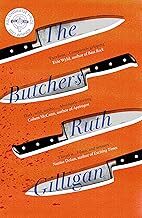
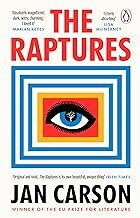
These authors will be present at the Avant-Scène theatre on Saturday 16th November, from 10am to 12pm, talking about their books, taking questions and doing book signings. At the end of the session, the winner will be announced…
In the selection for the High School Prize (Prix JMJE) is Irish author Sue Rainsford with her book Follow Me to Ground. She will also be present at the festival.
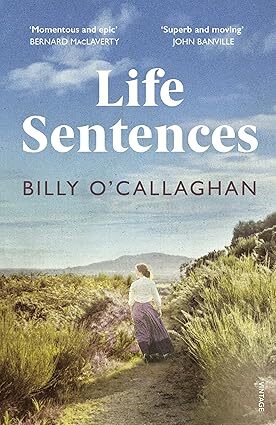
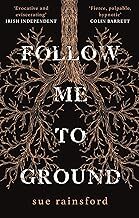
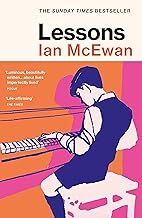
And I’m wildly excited to say that the winner of the coveted Jean Monnet prize this year is Ian McEwan with his book Lessons. He’ll be at the theatre on Saturday 16 November at 5:45pm to receive his prize.
The four Readers’ Prize authors will also be making appearances at libraries around Poitou-Charentes: see the programme below:

Other popular Irish authors will be present at round table discussions and book signings during the weekend, including Lisa McInerney, Ferdia Lennon and Darragh McKeon. If your French is good, you may be interested to hear a discussion about Maggie O’Farrell’s book The Marriage Portrait; she’ll be represented by her French translator Sarah Tardy.


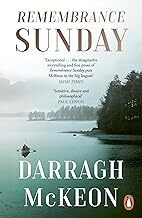

More details will be available as we approach the festival: follow the LEC facebook page for up-to-date information. If you’d like to work as a volunteer at the festival (I highly recommend the experience), get in touch with the LEC – or leave me a message in the comments or via my contact page. And finally, you might like to check out the video teaser of the festival here.
Look forward to seeing you in November.
*No matter how often I try (and, yes, some whole evenings have been spent trying) I’ve never managed to make a presentable Irish coffee.
September 13, 2024
Waterways, Water Days
Historically, there’s always been plenty of water in most parts of France: enough for everyone to drink, for leisure activities, gardening, bathing, squirting in water pistols at unsuspecting friends.
But water – and how we manage it – is becoming a subject for political and environmental discussion. How can the ordinary person make sure that this precious resource remains accessible for everyone?
With this concern in mind, some local citizens have got together and formed a ‘collectif’ to look out for our River Charente and its catchment area. It’s called CLAPOTIS, which means lapping water, and is in the early stages of its life.
My local bookshop, Le Texte Libre, has been key in the birth of CLAPOTIS. And as Le Texte Libre is celebrating its 50th anniversary this year, it has created a free Water Awareness Day in association with CLAPOTIS on Saturday 28 September 2024.

The day will include Round Table discussions with hydrologists and water management experts, interviews with authors of books on water, an exhibition of river basin maps, a bike ride to discover local water heritage sites, and several arty and educational family workshops.
One of these workshops is a French and English writing workshop, led by performer & poet Amanda Speed and myself. The theme is, of course, water – in all its forms. We hope to inspire you to write your own poem or prose piece, in English or French, through a series of fun activities and readings.
The workshop will be held at the Couvent des Récollets in Cognac (on the main pedestrian street) on Saturday 28 September from 2 to 4pm.
If you’d like to come, please reserve your place by calling Le Texte Libre on 05 45 32 20 52 or by email on textelibre@orange.fr . And remember to say which language you’d like to write in.
Hope to see you there!
Meanwhile, here’s Amanda Speed’s biography:
I started writing for pleasure as a child and have been writing ever since. After 45 years of creating and performing theatre (mainly in France) I finally published both poetry and flash fiction in the English language. Since then, 3 traditional stories have been revisited, performed and published in a bilingual illustrated book (illus. Marie Jeannot) by Scutella Editions. I have recently created Poetry on the Edge of the Bed (music Ali Hamra), A thousand and one Nights, A thousand and one Beds, A thousand and one Clitoris (A Corps Commun) and 10 cine-poems and a live show Crazy Loves (Collectif Cabaret Hétéroclite/Voix CorPorElles). My poems and texts continue to be published in both French and English.
July 1, 2024
Speaking Out
A Trip to Cork along the Flow Vélo:
Ireland is on everyone’s lips in the Cognac area this year. Hardly a conversation passes without a ‘Lisa McInerney‘, a ‘John Banville’ or a ‘Paddy Donnelly’ slipping out.
At least, this is the case among the team of people associated with Cognac’s European Literature festival (LEC : Littératures Européennes Cognac).

Held in November, the free festival features literature and art from a different European country each year – and 2024 is the turn of Ireland.
If you’re in France from 12-14 November, come to Cognac to meet a host of Irish writers via conferences, round tables, readings, discussions, book signings, art exhibitions and many other events that will help you understand Ireland better.
In September, I’ll be dedicating a blog post to the festival so that you have plenty of time to read the selected works and decide which authors you’d like to meet.
Meanwhile, the LEC has developed partnerships with other local festivals, libraries and cultural centres, bringing Ireland to us via a variety of events throughout the year.
Back in March, the LEC held a fascinating musical reading of Claire Keegan’s ‘So Late in the Day’ (what a brilliant work that book is).
And last weekend the LEC partnered with the festival Prise de Paroles (Speaking Out) held at Mitterand’s childhood home in Jarnac, where we met the talented Lisa McInerney, award-winning author of the Cork-based The Glorious Heresies trilogy.
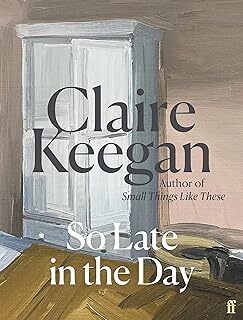
Don’t worry: she’ll be coming to the festival in November too.
 Version 1.0.0
Version 1.0.0
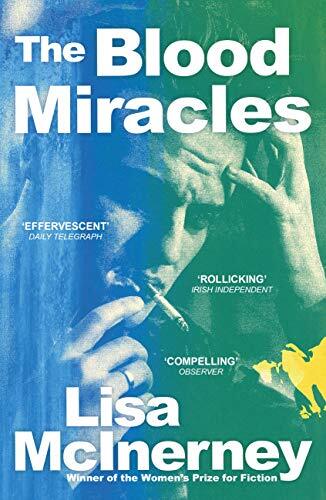 Version 1.0.0
Version 1.0.0

But what has the Flow Vélo got to do with any of this?, I hear you muse.
I’m lucky enough to live within freewheeling distance of the Cognac section of the Flow Vélo cycleway. And Jarnac is only 14 km from Cognac via this river-hugging part of the itinerary. So, unaware of the amber storm alerts, I set off early on Saturday morning, snug in my waterproof jacket, and sped along the newly resurfaced track* towards François Mitterand’s family home.
I was to spend the day helping sell books for Le Texte Libre – Cognac’s associative independent bookshop – and the idea of bookending a day at the cashtill with a little sport seemed a good one.
Mitterand’s birthplace is a wonderful venue for the summer festival, since the interviews and presentations take place on a lawn. The stage is set up under a huge lime tree that shelters the VIPs and part of the audience from the hot sun.

I took an hour off bookselling and sat down to enjoy interviewing Lisa McInerney. Gérard is a regular at the LEC festival: a Parisian journalist and the French translator of Joseph O’Connor, Salmon Rushdie and Paul Auster, among others, his interviews are always engaging and of top quality.
However, I did have chastise him when we all had lunch together afterwards.
As for Lisa, I was struck by the gentle demeanour of this woman, whose work – characterised by beautiful prose, a spattering of Irish terms and a wealth of rich, original imagery – is so masculine and violent.

It was a real pleasure to listen to Lisa’s soft, Irish accent as she answered Gérard’s difficult questions about Ireland and literature. Asked how she would define the Irish identity, Lisa explained how Ireland is always changing, due to its harsh history, and thus the question about what it means to be Irish constantly changes too. She mentioned the strong support the state gives Irish writers, promoting a plethora of literary magazines and small publishers. Lisa herself is editor of The Stinging Fly, a lit mag that showcases new writing both from Ireland and worldwide.
Gérard moved onto the theme of folklore in Irish literature, giving a spellbinding retelling of the legend about Oisin and Niamh and drawing parallels between Ryan in The Glorious Heresies and Oisin. Lisa said that as the Irish grow up with mythology, it seeps into their work. In her case, it’s not an intentional element.
She spoke about the place of Irish humour in the face of the country’s grim history, and how her stories, which feature drugs and prostitution, need light to balance the dark. ‘Irish history is ridiculous: if you don’t laugh, you’d cry,’ she said. She returned to this theme later, when she explained the importance of piano playing to her character Ryan, saying that his musical creation balances the destruction he’s involved in.
… Which brings me to why I had to tell off Mr Meudal.
I’ve only read the first book in the trilogy, you see. And of course Gérard had to explain the story to those in the audience who aren’t familiar with Lisa’s work. So I was obliged to plug my ears with my fingers for a good five minutes, tempted to sing ‘la, la, la’ to drown out the microphone. But that would have annoyed my neighbours even more than spoilers.
Go on. Say it. It was my fault for not reading all three books before the interview…

As Lisa’s interview – valiantly translated by David, a volunteer English teacher from a Niort high school – drew to a close with a reading, so did the good weather.
The lime tree sheltered everyone for a while. But by 3pm the storm arrived and, as I cycled home through puddles and drizzle, I realised that if the weather doesn’t improve drastically, my three-week cycling trip along La Vélidéale this summer may well be the most difficult yet.
More about that in August…
Meanwhile, have a happy – and hopefully dry – summer.
* In a previous blog post, I warned you that the Flow Vélo track was seriously damaged by floods and cars: it’s now (almost) as good as new!
May 22, 2024
Flow Vélo 13 : Exodus
La Flow Vélo from Thiviers to Excideuil
The idea of cycling 220 km from Thiviers to Sarlat and back over five days had seemed feasible. But with only 2 days of our long weekend left – thanks to our stop at Rénamont guinguette – we decided to be reasonable and just do a part of the route.
We’d start with a gentle 20 km stretch between Thiviers and Excideuil on Saturday. And then we’d do the 100 km return trip from Excideuil to Le Lardin on Sunday. After our last disappointment on the Flow Vélo a few weeks ago, we hoped the route would be flood-free.

Our starting point was the simple campsite in the market town of Excideuil.
From the moment I uttered the town name, my husband started ‘singing’ the Bob Marley song Exodus, a tune that would accompany us throughout the day.
The name was strangely fitting for the quaint little town, which seemed to be fighting a population exodus. Perhaps people have been driven away by the tune of the church bells (what is that song?). Or maybe it’s simply quiet out of season.
We were disappointed not to find a restaurant open when we arrived on Friday evening – though there’s a bicycle shop and a bookstore.
Even the central hotel-restaurant-bar Le Fin Chapon closed at 7pm, serving meals only for private functions.

But the château, growing out of a rocky cliff, made up for the culinary disappointment. It was beautiful in the golden hour sunshine. We examined the rock-climbing routes (closed), thinking about our dusty climbing boots at home, and speculated over tunnel networks leading into the castle from the caves.


After a hot shower, a pizza and a night of nightingale song, we set off on our bikes from the campsite on Saturday morning.

There were no specific ‘Flow Vélo’ signs, just the standard green cycleway ones.
I knew that there were other cycle routes in the area, so we decided to check which way to go by asking at the tourist office.
There, we were told that following a landslide in February, one of the streets on the Flow Vélo was closed. The tourist assistant highlighted an alternative route on the town map she gave us (not the crossed out highlighted part) and we were able to confirm that the standard green signs indeed referred to the Flow Vélo.

Exodus Excideuil might not fulfil restaurant needs but there’s a charcuterie and boulangerie, so we bought food for our second breakfast, early lunch, late lunch and tea (yes, we’re a bit like hobbits in that respect) before setting off at 11am.
Knowing the route was entirely on roads, I had limited expectations as to its beauty. Silly me. This is the Dordogne! In Spring. And the route took us along tiny roads where there was very little traffic.


We cycled up and down the hilly terrain, enjoying the scent of grass seed and acacia blossom and the sight of wildflower prairies and woodland stretching into the distance. On the downhills I was careful not to slide on the loose gravel, and on the uphills I stopped to take photos (any excuse for a rest).
The steepest hill was named Rue de l’Abime (Abyss Street): had we been carrying tents etc., we’d have had to walk here. The name is more apt going from Thiviers to Excideuil, because of the way you plunge into a hamlet at the bottom of the valley.



As we progressed, listening to cuckoos, cicadas and enjoying moments of deep silence, I realised that we weren’t going to be bothered by floods here. It’s the only stretch of the Flow Vélo, so far, that would merit an electric bike.
I fell under the charm of Corgnac-sur-L’Isle, where we stopped for our first lunch and a hammock siesta after 16 km. Set on the River L’Isle, it’s pretty, has a couple of shops, public toilets and water point, and a very basic campsite. Be careful of the cycleway signs you follow, here, as the local cycle routes criss-cross the village.



After a snooze, we left Corgnac and began a 5km climb to the hilltop town of Thiviers. The road was slightly busier but the masses of elderflower, the dog roses, buttercups and cow parsley made it a pleasant ride. We’d have an ice-cream in Thiviers as a reward.
Our arrival in Thiviers took us past a Lidl to the centre. We visited Thiviers when we cycled the St.Pardoux-la-Rivière to Thiviers stretch of the Flow Vélo, and I didn’t warm to it then. The fact there was nowhere open to buy a decent ice-cream didn’t endear it to me this time either. Sorry, Thiviers. Despite the plethora of little boutiques, I’m not a fan.
With 22 km on the clock, we bought an industrial ice-cream at the supermarket and then headed back towards Excideuil. I counted the uphills: there were seven. Seven! It’s definitely electric bike territory. And we weren’t the only cyclists suffering from the hills. It broke my heart to have to tell an exhausted cyclist coming up the Rue de l’Abime with a load that he still had a 5km climb before he reached his destination in Thiviers.


I must admit that my legs were aching when, at 44 km, we reached the main square in Excideuil, the end of our return journey. Was it any wonder that when we saw people sitting at Le Fin Chapon terrace drinking aperitifs in the evening sunlight, we decided to join them?
That’s the point at which I discovered that today’s route is classed as ‘average difficulty’. The route we’d planned for the next day – 50 km between Excideuil and Le Lardin plus the return 50 km – is classed as ‘difficult’. We also learnt that the spell of good weather might break.
Can you guess what decision we made when we woke to the pitter-patter of raindrops on our tent the next morning?
Our long weekend of cycling had resulted in 44 km out of the planned 220 km. Strangely, I wasn’t surprised we failed to reach our objective. It was a little optimistic.
Obviously, we’ll have to come back to continue our exploration of the Flow Vélo extension. The question is, will we be focussed enough to avoid a stop at Rénamont?
May 16, 2024
Parallel Worlds: The Land of Rénamont
If you read my last blog post (thank you), you may be surprised by today’s title. What? No reference to our cycle ride along the Dordogne extension of the Flow Vélo?
There’s a reason for that.
With a 5-day bank holiday weekend ahead of us, we’d decided to do the return cycle ride of 220km from Thiviers to Sarlat and back, which worked out at a reasonable 50km per day. The weather forecast was perfect, our camping equipment was packed and our bikes jumped eagerly onto their new bike carrier. We set off on Wednesday morning in our car for the Perigord Vert…
… And were swept into a parallel world.
Let me explain. Some places and people are irresistible, so when we were invited to help clean, repair and improve one such place during the long weekend, we were keen to participate, albeit for a few hours. It was in the Dordogne, near Brantôme. We would make a short detour and pop in on our way to Thiviers.





This magical place is one we discovered on a bike ride in 2020: La Guinguette de Rénamont. It’s a riverside bar, restaurant and campsite, open only in the summer, where you can hire canoes, bathe in the Dronne river (no supervision) or laze on the beach, enjoy fortnightly concerts, play pétanque, volleyball or ping-pong – or simply chill out.

If that sounds idyllic, it gets better: set at the end of a long track, far from any houses, the environment is natural and there’s no mobile reception.
Instead of screen-scrolling, people actually talk to each other and kids play together, making for a convivial atmosphere. A parallel world, right?
For the last two years, friends of ours have been managing the family business: two sisters, Léa and Vanille, and their respective partners Olivier and Michel. The sisters fell into the Land of Rénamont when they were children – a little like Obélix and the magic potion – and spent their childhood summers there.
‘Time stands still at Rénamont,’ says Léa. And she’s right. Time stood so still for us that… well, I’ll explain later.
The guinguette was buzzing with activity when we arrived. Over fifty people were working hard in the sun: painting walls, replacing kitchen tiles, repairing gutters, weeding the pétanque court (by hand – no weedkiller here). The river had reclaimed the building during the winter, leaving mud and debris to be cleaned away ready for the June opening. Even a flock of sheep were doing their bit by munching away the long grass.





We began with a delicious meal – in true French style – prepared by Olivier. Having worked in London and Australia, he’s bilingual as well as being the guinguette cook.
The restaurant serves veggie meals as well as standard French cuisine.
Bar snacks, including local ice creams from La Ferme Texier-Pichot, are also available.

It sounds as if I’m advertising for Rénamont. Rest assured, I’m not – they don’t need it! It’s just that I love the glorious wildness and timeless atmosphere of this spot.



After helping clear the meal, I checked out the centre of operations: The Blackboard, where the list of jobs was to be found.
With fifty volunteers to manage, the clean-up exercise could have been a headache for Lea, Olivier, Vanille and Michel. But everything seemed to happen naturally. We chose a job that matched our skills, found someone to help us, did it and then crossed it out. Simple, eh?






There’s nothing like working together to catch up with friends and get to know new people. I won’t bore you with the details of everything the teams accomplished. But, come the evening, we still hadn’t caught up properly. There were beers to drink, anecdotes to share and another meal to eat.

It seemed a little pointless to leave after the meal. Why not start cycling the next day and do our 220km in four days instead of five?
We pitched our tent beside those of our friends and I fell asleep to frogsong, nightingales and laughter, snug in my sleeping bag.
The next morning, Thursday, we were greeted by sunshine. It was perfect weather for cycling…
… But also perfect for washing down canoes, hammering new posts into place, making new fences and weeding the beach. The blackboard seemed almost as full. And everyone was just as busy, including the children, who were living their best lives.





To be honest, we didn’t even consider leaving. Our bikes looked content, strapped to their carrier and watching the tractor, vans, people and wheelbarrows passing.
Besides, nothing obliged us to do the whole stretch of the Flow Vélo extension. We could do half of it. Or less. We could camp in Excideuil and cycle to Thiviers on Saturday, and then cycle from Excideuil towards Le Lardin on Sunday. This plan meant we’d be able to stay at Rénamont right until the end of the clean-up session on Friday afternoon.
Who would be silly enough to turn down an opportunity to stay for as long as possible in such a perfectly parallel world?
Not us.
There was some cycling involved in our long weekend but I’ll tell you about it next time. Meanwhile, if you’d like to discover La Guinguette de Rénamont, you’ll find it near Bourdeilles, between Ribérac and Brantôme, half an hour from Perigueux.
Here’s a list of things to bear in mind:
Limited opening from 1st June: bar snacks only. Canoeing just possible at the weekends.Opening concert: Saturday 15th June. A single dish will be served. Campsite open.Fully open from 16th June, including the restaurant from midday.No payments by card; only cheques or cash.No motorhome services: only ‘wild’ van camping.No dogs at the guinguette (only on the campsite).Restaurant open from Tuesdays to Sundays (closed on Mondays). Vegetarian meals possible. Reservation advised.Campsite reservation advised between mid-July and mid-August.The beach is unsupervised: you’re responsible for your children (and yourselves).Events for 2024 include: open air cinema projection, onsite hairdresser, a performance. Check out the Rénamont Facebook page throughout the summer for more surprises.May 6, 2024
In The Flow
(An Update of the Flow Vélo cycleway in April 2024)
One of my daughters has just returned from months of travels to fire-spitting lands. Full of her new experiences, she remarked that although there are wonderful things to see in faraway places, smaller marvels closer to home can thrill us just as much.
It took me nearly fifty years to come to the same conclusion, thanks to our discovery of Doorstep Cycling. Is this young woman really my baby?
Given her mature attitude, I suggested she join us in our first 2024 bike ride along the Flow Vélo to see the small marvels in the Charente.

She’s heard us waxing lyrical about the beauty of the river, the birdsong, wildflowers and woodland. And the ice-creams.
She was keen, would do a recce for a summer cycling holiday with her mates.
As you’ve probably noticed, it’s been a wet winter. The River Charente has flooded at least four times, the most recent being a few weeks ago. Not that my husband will admit this: ‘It’s not flooding. It’s the river’s secondary riverbed, the one it uses when there’s a lot of rain.’
Good point. We shouldn’t be building on flood plains.
As a consequence of the river having late lie-ins in its second bed, our bike rides since March have been on countryside roads. It’s beautiful around St.Bris des Bois and we love St.Sauvant – apart from the steep hill, where we collapsed at the top and watched a cyclist climb it five times in a row. Either he’d lost something (my opinion) or was training (my husband’s opinon).



We also discovered Aubeterre-sur-Dronne, a pretty village with a monolithic underground church and an artisanal ice-cream shop. And more steep hills. No wonder we were keen for the water level to drop so we could enjoy our flat local section of the Flow Vélo.
‘The section upstream from Cognac is as inspiring as any volcano,’ we told our daughter as we set off on a sunny Saturday in April, promising her easy cycling.
The first obstacle came after 2km. Along with river ‘not-flooding’, we’ve also had a couple of strong gales this winter, and an oak tree had fallen across the cycle track between Cognac and St.Brice. We dragged our bikes over the tree, feeling sorry for it. And for cyclists with heavy electric bikes.
It wasn’t until a couple of hours later that we came across our second obstacle, though they weren’t hours of cycling: we’d stopped at our much-loved Jardins Respectueux (Respectful Gardens), where a plant and seed exchange had drawn crowds. We ended up showing our daughter the grounds, chatting to other gardeners, eating our picnic…
This second obstacle was actually several long sections of damaged cycle route, particularly at Gademoulin lock and between Bourg Charente and Jarnac (sorry, no photos). I advise you to check the state of the Flow Vélo here before venturing along it.
The damage isn’t the river’s fault. When the water recedes it just leaves mud and debris – which makes for fascinating landscapes. And some other things worthy of a horror film (but more about that later in the post).


The damaged sections of the Flow Vélo are where tractors and cars have access to the cycleway. They’ve made potholes and caused the surface to crack and cave in, resembling the earthquake damage in Grindavik, Iceland. We did manage to pass, but we regretted the smooth surfaces of last summer.
‘It used to be much better than this,’ I told my daughter.
I could almost hear her thinking; ‘Yeah, right: in the good old days.’ But, no, she’s not a teenager anymore. This setback was nothing to our seasoned young traveller.
A couple of weeks later, with the river back in its primary residence, she agreed to discover the section downstream of Cognac with us. I had visions of crossing the river on the chain-ferry at Chaniers and stopping for a glass of rosé; of showing her the storks, which nest near Rouffiac; of stopping at the Port du Lys guingette for waffles.
We made better progress this time, since there were no distractions – not even the guinguette, which will only open later in May. At least, there were no distractions until, after more fallen trees and a picnic, we reached the prairie beyond the Port du Lys.



We normally look skywards in the prairie to admire the storks circling and spiralling down to their nests. But today a dozen were on the ground. What luck! We cycled closer. They didn’t move. Even closer. They reluctantly flapped their huge wings and launched their bike-sized bodies into the air, settling fifty metres further away.
But my daughter had stopped watching them. She was staring at a puddle (she normally stares at rocks and stones). There were several stretches of water in the flood plain. And they were alive with movement.
‘Tadpoles?’ I suggested.
We looked more closely and saw red crab-claws and huge black bodies (huge = 10cm long). The puddles were full of crayfish. It was like a horror film, with hundreds of them strewn across the cycle track where the river had receded and left them as a sacrificial feast for the winged gods.
It was lucky we’d waited until a month after the last flood to attempt this section. Though there were a few puddles, they were just fun.

Then, a few kilometres later, we were faced with this.


My brave husband forged his way through the not-flood. But after 200m he returned and reported that secondary river residences were in use around the corner. We had no choice but to turn tail.
My daughter seemed delighted with her cycling trips but I was disappointed that we hadn’t been able to offer her an ice-cream or a glass of rosé.
‘We’ll come back,’ I told her as we cycled home. ‘It’s much better in the summer.’
And as summer weather has been forecast for the Ascension holiday next week, we’ll be returning to the Flow Vélo. But not with our daughter, who’s off to lands where fire no longer spits from volcanoes. And not to any flood plains.

We’re going to a new part of the Flow Vélo. We’re off to the Dordogne to discover the new 110km extension from Thiviers to Excideuil, Le-Lardin-St.-Lazare and Sarlat.
With five days to do the return journey, it’ll be a doddle.
I’ll tell you all about it next time.
June 5, 2023
Flow Vélo 12 : Teas and Trees (extract)
La Flow Vélo from St.Pardoux-la-Rivière to Thiviers
In July 2020 we spent a few days camping in St.Pardoux-la-Rivière in the Dordogne. From our base camp, we cycled in a different direction each day and explored the countryside. This was our first contact with La Flow Vélo.
On our last day of the holiday, intrigued by the signs, we decided to follow them. I blogged about this camping trip as a part of the series ‘Abandoned Parent Training’. Below, you’ll find an extract of my blog post ‘Teas and Trees’, in which I mention the ‘breakaway’ trip from the Flow Vélo to visit the touristy town of Brantôme, and also the section from St.Pardoux to Thiviers, the eastern end-point of La Flow Vélo.
***
A visit to the upper Dronne isn’t complete without a visit to Brantôme – or so the friendly locals in the village bar at St.Pardoux-la-Rivière told us.
It didn’t look too far, so we decided to follow their advice and cycle there the next day, taking only small roads, as usual. An idyllic lane ran parallel to the river on the far side of the main road. It was perfect cycling territory and we even took chances on some tracks.


Brantôme, like many picturesque towns in summer, was crowded with tourists. Despite this, it was worth the visit.




It’s the kind of place you want to visit on a crisp, winter’s day. In fact I’ll definitely be going back this winter because I found treasure there.
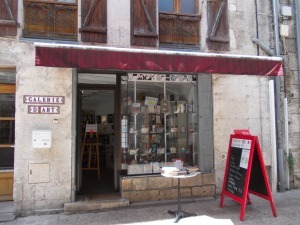
My treasure was a little shop called BookStop. It sells English books, holds art exhibitions, hosts visiting authors and even an English writing group.
Best of all, given the morning’s cycling, it has a tea room. The owner, Howard, was serving tea in its little garden overlooking the river. Not any old tea: cream tea! Along with fish’n’chips, cream teas are one of the things I miss about the UK.
Howard’s cream tea was delicious and I loved the British feel of the garden. If you’re in Brantôme, call into 19 rue Victor Hugo and say ‘Hi’ to Howard.



To vary the return cycle ride from Brantôme, we decided to take a series of lanes a little higher in the hills. Our large-scale map didn’t show all the roads but, luckily, my partner navigates with the sun and the lie of the land, (meaning that when the sun sets it’s night and that downhill is towards the river) so I knew we’d be fine.
It was hilly but we were here to train. And then it was even hillier and the sun didn’t seem to be in the right place. There was a distinct lack of roads heading in the direction we wanted. The tracks didn’t lead anywhere either.
At last, we arrived at the campsite, exhausted, with 56.1km on our counter.
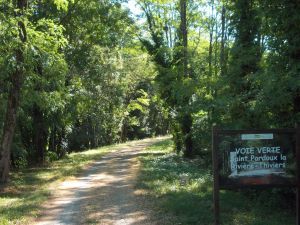
The highlight of the following day again revolved around refreshment.
It was hot so we headed along the ‘Flow Vélo’ cycle track to Thiviers, stopping for lunch at St.Jean-de-Côle along the way.
We found the former railway line rather monotonous because there weren’t many unexpected sights. The end of the line, after 22km of gentle cycling, was the hilltop village of Thiviers, reached by a road. It was hot after the shady part and I found the village slightly disappointing.
But St.Jean-de-Côle was stunning! With its rustic buildings, car-free centre (almost), narrow alleys and roman bridge, it’s a village languishing in a time warp.




We were charmed by the setting of a restaurant called Le Temps des Mets and decided to treat ourselves to lunch there. The tables are on the village green under plane trees and the quality of food was excellent.


We’ll definitely be coming back to St.Jean-de-Côle.
May 29, 2023
Flow Vélo 11 : The Missing Piece
La Flow Vélo from Geay to Rochefort
Following the first day of our Rochefort weekend in May, our aim for the second day was to cycle the only part of the Flow Vélo we hadn’t yet seen: from the hilltop village of Geay, last visited a year ago, to the fascinating town of Rochefort, where we were currently camping.
You’ve seen the problem, haven’t you?
Being (slightly) psycho-rigid, I wanted to do the ride in the same direction as our other Flow Vélo stages. But our starting point was Rochefort. Should we load our bikes into the car, drive there and then cycle back?
‘No need,’ said my resourceful husband, studying our Flow Vélo guidebook. ‘Looks like there’s an alternative route.’
I checked and saw we could cycle to the mid-point village of Cabariot via the Vélodyssée. Having been disappointed by the choice of roads on the Scandibérique route (EuroVelo 3) last year, I was hesitant about using the Vélodyssée (EuroVelo 1).
But it would mean we could try out Rochefort’s transporter bridge – just open after 4 years of renovation. And circuits are much better than return journeys.

We packed the car, left it outside the fabulous ‘Le Rayonnement’ campsite and set off under a blue sky. There was a strong westerly wind and my husband muttered about the inaccuracies of weather forecasts (see my blog post from the previous day to understand why). This morning I’d stood in front of the campsite’s weatherboard, blocking his view of it so that he couldn’t see the warnings of storms and 50kmh gusts of wind for late afternoon.
We’d just have to cycle faster than our usual 10km/hour. And forgo our ice-cream stop. And maybe our siesta.
1) The Vélodyssée Part (Rochefort to Geay)

We joined Rochefort’s ‘ringroad’ cycle path, signposted Le Chemin de Charente, at the Corderie Royale ropery.
I love this cycleway, which takes you around Rochefort via the river and through countryside. There are some delicate passages, however.
Within a few kilometres, we arrived at the transporter bridge. It only costs 2€10 to cross, and we waited 10 minutes for the hanging cage to arrive from the Echillais side of the River Charente.
The crossing was surprisingly smooth – apart from the heavy jolt when the cage hit the platform on the south bank. We followed the other cyclists out of the cage and looked around.



Unsure of where to go – the link to the Vélodyssée isn’t signposted – we turned left and passed in front of the transporter bridge visitor centre.
My husband suggested stopping to look, as we’d heard it was really good (and free). But I was thinking about the forecast gale.

‘Let’s see it next time,’ I said. We both wanted to return to Rochefort to eat at the yummy Route des Epices restaurant again to do more cycling. We fancy the cycling circuit to Port-des-Barques, from where you can cross to Île Madame at low tide.

We got a little lost on the roads around Echillais. My husband wanted us to follow the signs to the Vélodyssée, even though they were marked ‘Marennes’, which is the opposite direction to Cabariot.
His compass agreed with him, so what could I say?
Perhaps we did arrive on the Vélodyssée a little further south than planned (near St Agnant)… But what a pleasant surprise it was!
This part of the cycleway follows a former railway track, is lined by trees and holds a series of sculpted delights. If you follow this route – and I really do recommend it – keep your eyes open for these fellows.



When the Vélodyssée joined the River Charente, we turned right onto the Flow Vélo. I mentally closed my eyes as I cycled, so that I’d discover it properly on the return journey.
I simply let the rising wind push me onwards, listening to the cuckoos and admiring the dog roses, elderflower, marguerites and irises until we reached Geay.
It was 3pm and we’d cycled 32km. The storm would soon be upon us.

2) The Flow Vélo Part (Geay to Rochefort)

So, let’s psycho-rigidly imagine we started our day’s cycle ride in Geay: at the romanesque church, to be precise.
It’s not actually on the route but it’s worth cycling the hundred metres up the hill to see both the building and the views from the church gardens.
From Geay, a lane took us down to the towpath along the Canal du Moussard.
This waterway runs parallel to the River Charente between St Savinien and Rochefort, irrigating the marshland around the town with fresh water.

Between Geay and Cabariot, the Flow Vélo mostly follows this canal, which can be arduous when it’s windy. Which it was. Luckily, the route regularly diverts up into villages such as L’Epine and Romegoux – though this means cycling up hills.
Time was passing and I was keen not to be cycling when the storm arrived. As we approached the canal bridge to take us up into L’Epine, I had an idea.

‘Let’s take a short cut,’ I said.
My husband looked dubiously at the long grass on the towpath.
A voice in my head reminded me, in Bilbo Baggins style, that short cuts make long delays.
But if we could pass, we’d save time here and also at the Romegoux diversion further along, which involves a long uphill and then a busy-ish road.
Don’t make the same error as us. Short cuts do indeed make long delays.
Although we delighted in the wildness along that stretch of towpath – in the sound of frogsong and bird calls that we’d not heard along the rest of the canal – the brambles under our tyres worried us.


Just before we reached the end, our way was blocked by a tributary stream and a fence. We had to turn back.
Not only did I spend the next few days checking my body for ticks, there was also a more direct consequence.
Luckily, Bicycle Repair Man was with me.

Up to now, the Geay to Cabariot section had been my least favourite part of the Flow Vélo (nothing to do with the puncture). But the view from the Pont de Cèpe bridge, followed by the lakeside park at Cabariot were two highlights. We allowed ourselves an ice-cream beside the lake (which you can’t swim in), and admired the lockers for loaded bikes. What a great idea.



Then came the arrival in Tonnay-Charente. We know this place as car drivers: it’s the traffic-jammed village you have to cross to get to Rochefort if you don’t take the motorway. So our expectations were low.
Once again, we were proved wrong. One advantage of cycling locally is that you discover different facets of the places you think you know. The entry into Tonnay, along a little lane, takes you past the beautiful (private) Château des Capucins and then under a huge suspension bridge.



Despite having driven many times through Tonnay-Charente, I had no idea it harboured such treasure. We cycled up onto the foot-passage-only bridge, from where we had beautiful views of Tonnay’s quayside face.
From Tonnay, the Flow Vélo followed a cycle path along the main road into Rochefort, which wasn’t much fun. Then, just past Lidl, we joined the Chemin de Charente. I must admit that I much prefer the south bank approach to Rochefort, via the transporter bridge.

Upon our arrival in Rochefort at 6pm, with 65km on the clock, there was still no sign of the storm. In fact it was sunny and the wind had dropped.
When I noticed an ice-cream seller beside the dry dock, I could think of no reason for not stopping. Especially when I saw which ice-cream maker it was.
We’d already eaten one ice-cream today. But we had something to celebrate.
And so, instead of drinking champagne, we celebrated reaching the end of our Flow Vélo adventures with an ice-cream from Ernest Le Glacier – the La Rochelle ice-cream maker who, in my humble opinion, is the best in the world.
What better way to finish our 290km+ expedition than with an ice-cream and a view over the River Charente?




